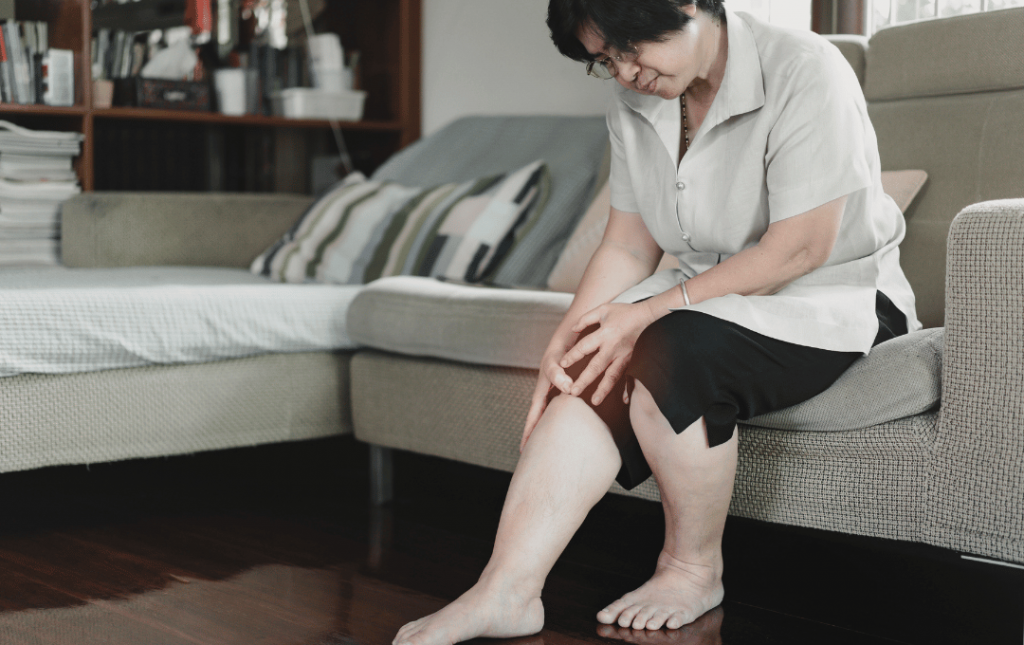Are you worried about peripheral artery disease (PAD) and the possibility of surgery? If you’ve recently been diagnosed with PAD, you may be wondering if surgery is required to treat the condition.
Peripheral artery disease (PAD) is a progressive condition that can lead to chronic discomfort, non-healing ulcers, and even amputation if left untreated. While surgery is an option in some cases, many patients benefit from minimally invasive treatments offered by a vascular specialist.
Understanding Peripheral Artery Disease
Peripheral artery disease is caused by a buildup of plaque in the arteries. This build-up causes the arteries to narrow, restricting the flow of blood, oxygen, and nutrients to the lower extremities.
As PAD progresses, narrowed arteries reduce blood flow to the legs, causing symptoms to worsen over time. In more advanced PAD stages, surgical intervention may be necessary to relieve severe pain and restore circulation.
Common symptoms of PAD include leg pain, cramping, and numbness. Patients with advanced symptoms may experience slow-healing wounds, rest pain, or skin discoloration.
Early intervention can help prevent symptoms from worsening and stop the disease from progressing to the most severe PAD stage, critical limb ischemia (CLI). Once PAD has progressed to this point, minimally invasive treatment may not be an option for your condition.
Is Surgery Always Necessary for Peripheral Artery Disease?
Surgery is not always necessary for the treatment of peripheral artery disease (PAD). Most patients can manage PAD effectively through a combination of lifestyle changes, medication, and nonsurgical treatment.
Treatment Options for Peripheral Artery Disease

There are several surgical and non-surgical treatment options available for patients with PAD.
Non-Surgical Peripheral Artery Disease Treatments
Minimally invasive procedures are often effective in restoring blood flow and relieving PAD symptoms, with most patients recovering within one to two weeks. Depending on the severity of your condition, a vascular doctor may recommend one of the following procedures:
Angioplasty: During an angioplasty, a vascular specialist inserts a thin, flexible catheter with an inflated balloon into the affected artery. The balloon is inflated, pushing the plaque against the artery walls and widening the artery to restore blood flow.
Stent placement: After an angioplasty, a vascular specialist may insert a small, expandable mesh tube into the affected artery to keep it propped open. If an angioplasty isn’t needed, carotid stenting or a self-expanding stent may be required.
Atherectomy: A catheter is inserted into the groin or thigh and used to remove plaque from the affected area of the body physically. If needed, a stent may be placed after the atherectomy to avoid future build-ups.
Whether you’re in the early stages of PAD or facing more advanced complications, the specialists at USA Vascular Centers are here to help. We are a nationwide network of AAAHC-accredited facilities specializing in minimally invasive treatments. All non-surgical peripheral artery disease medical procedures are performed in our state-of-the-art outpatient centers by vascular experts.
Surgery for Peripheral Artery Disease
If lifestyle changes, medication, or minimally invasive treatments aren’t enough to manage advanced PAD symptoms, such as severe leg pain, non-healing wounds, or reduced mobility, a vascular doctor may recommend traditional peripheral artery disease surgery to restore blood flow.
Common surgical procedures include:
Bypass surgery: During this procedure, a doctor creates a new pathway for blood flow by grafting a synthetic tube or healthy vein above and below the affected artery.
Endarterectomy: Plaque is surgically removed using a specialized tool to restore blood flow in the lower extremities. The procedure requires a small surgical incision near the groin.
Peripheral artery disease surgery can increase the risk of blood clots, infections, and nerve damage. The recovery time is also typically around six to eight weeks. Depending on the severity of your condition, surgery may be the only option to prevent the disease from worsening, which is why early intervention and regular vascular screenings are important.
Lifestyle Modifications Before PAD Treatment
Lifestyle changes paired with treatment for peripheral artery disease can help prevent your symptoms from worsening and improve your overall quality of life. Depending on your condition, a vascular doctor may also recommend medication to help lower your blood pressure or cholesterol levels. Here are some of the peripheral artery disease management tips before treatment:
- Smoking cessation: Quitting smoking is crucial
- Adopt a heart-healthy diet
- Stay active with supervised exercises
- Take prescribed medications consistently
- Follow up regularly with your doctor
It’s important to note that lifestyle changes alone cannot cure PAD or prevent the disease from worsening. Lifestyle changes are most effective when paired with targeted medical treatment.
BOOK A CONSULTATION TO LEARN MORE
What Is the Best Treatment for Peripheral Artery Disease?
The best treatment options for peripheral artery disease (PAD) will vary from patient to patient. After an accurate diagnosis, a vascular specialist will recommend a treatment plan depending on the stage and severity of your condition.
Early intervention is key to preventing PAD from worsening and expanding your treatment options. A vascular doctor may recommend a combination of lifestyle changes and minimally invasive treatments to prevent the disease from worsening.
Hear From Patients Who Reclaimed Their Health After PAD Treatment
Discover how real patients found relief and regained their quality of life with personalized PAD care. Their stories could inspire your own journey to better vascular health.
Take Control of Your Vascular Health Today
USA Vascular Centers creates personalized treatment plans that help alleviate symptoms, improve mobility, and reduce the risk of developing advanced peripheral artery disease (PAD). We also accept most insurance plans, including Medicare and Medicaid.
To learn more, schedule an appointment online or call us at 888.773.2193.
FAQs About PAD & Surgical Treatment
What happens if you don’t treat peripheral artery disease?
Without treatment, PAD can lead to critical limb ischemia (CLI), slow-healing wounds, and even gangrene.
Can lifestyle changes alone manage PAD?
No, lifestyle changes alone cannot cure peripheral artery disease (PAD); surgical or non-surgical medical treatment is needed to slow the progression of the disease.
Is angioplasty considered surgery for PAD?
No, an angioplasty is not considered surgery; it is a minimally invasive procedure that allows you to return home the same day.


